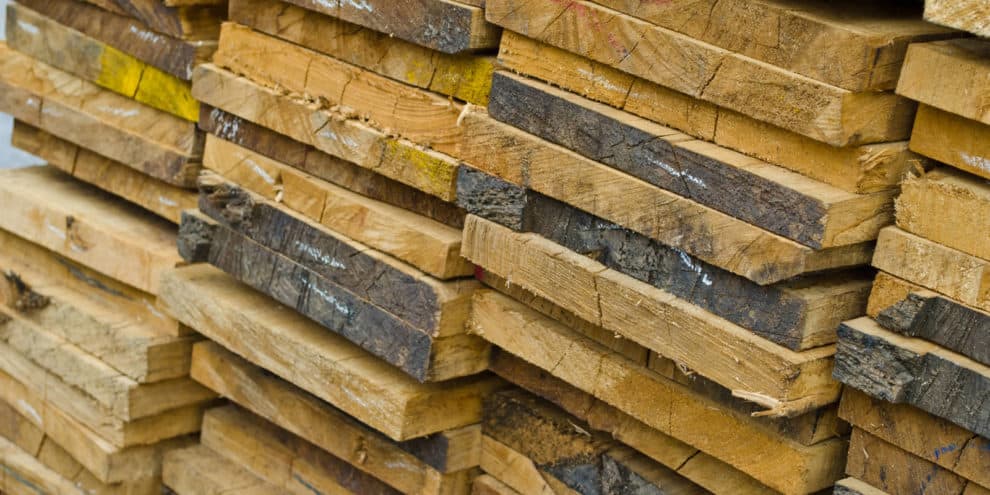Timberland investors and REITs rely on continued demand for wood raw materials from forest product manufacturers to justify their investments in timberland. That explains why we started fielding questions from clients late last year regarding the new Southern Yellow Pine (SYP) “design values” and the potential effects on Southern pine sawtimber markets.
“Design values” are the properties that builders expect Southern pine to deliver when used it in construction. These include, for example, lumber’s ability to resist bending, tension, and compression. In October 2011, the Southern Pine Inspection Bureau (SPIB) issued new design values, effective June 1, 2012, that reduce four of seven values by 20% to 35%.
At a high level, here’s our view on what timberland investors need to know.
Design Values: A Brief History to Today
Rigorous testing of lumber’s strength capabilities began in the 1920s. Publishing of formal design value specifications began in 1944. Since then, design values have been subject to continued review and evaluation to account for new information from laboratory tests, new developments in design, and experience with wood construction in service. Modifications to design specifications are not unusual. The 1982, 1986, and 1991 versions contain numerous revisions.
The In-Grade Testing Program, initiated in 1978, verifies existing design values. Agencies collaborate with the US Forest Products Laboratory to test thousands of pieces of lumber annually. Overall trends in annual test results suggested a potential shift in the wood mix and resource base. This prompted a directed year-long program to review and submit the revised design values. Review of other species and product types are currently underway.
Market Implications
Changes apply to a small fraction of lumber volumes specific to visually graded SYP lumber in No. 2 and lower grades for 2×2’s through 4×4’s. This means that, at a high level, 2x2s through 4x4s produced from Southern Pine visually graded lumber are not rated as strong as they were previously. Design values for other grades will remain the same pending 2012 testing.
Amanda Lang recently presented an overview of timber markets and wood bioenergy demand at the Southeastern Society of American Foresters Meeting at Jekyll Island, Georgia. On the topic of Southern Yellow Pine “Design Values”, she said:
The overall market effect will be minimal. We do not foresee substantive changes to the overall prices or market demand for Southern pine sawtimber, although we see some changes in the types of lumber produced. Building designers/mill customers will ultimately dictate these effects. We see some shifting from visual graded lumber to machine graded lumber. Conversely, building designers may change designs to accommodate new design values while still using visual grades. Individual mills that produce majority visual grade could be affected the most by these changes, but the specific effects will be determined by mill customers.
Minimal Net Impact on Stumpage Prices
At the end of the day, changes to SYP design values represent a “second order” implication for timberland investors and managers. In other words, potential changes and strengthening of stumpage prices in the US South have greater dependence on the housing starts generally, on the types of homes built (single family versus multi-family) and on the cost of money, as reflected in borrowing and mortgage rates available to builders and home buyers.
This content may not be used or reproduced in any manner whatsoever, in part or in whole, without written permission of LANDTHINK. Use of this content without permission is a violation of federal copyright law. The articles, posts, comments, opinions and information provided by LANDTHINK are for informational and research purposes only and DOES NOT substitute or coincide with the advice of an attorney, accountant, real estate broker or any other licensed real estate professional. LANDTHINK strongly advises visitors and readers to seek their own professional guidance and advice related to buying, investing in or selling real estate.










Does this include imported pine products?
The reason for this change should not surprise any forester. We’ve known about the issues with juvenile wood for years.
The fact is we can grow a lot of wood fiber in a short rotation. We cannot grow grade lumber in a short rotation.
Thanks to the Federal Reserve and our deficit happy Congress, housing starts may be slow for years. Of course, we really do not need another housing bubble like the one that just popped.
In coastal South Carolina, chip-n-saw (the product class most likely affected by the grade change) is almost as cheap as pulpwood. Pine sawtimber prices are around $20/ton. These values have about one-half of the purchasing power that the prices had in 1968 when I started practicing forestry.
We have done a jam-up job of creating a sustainable forestry.